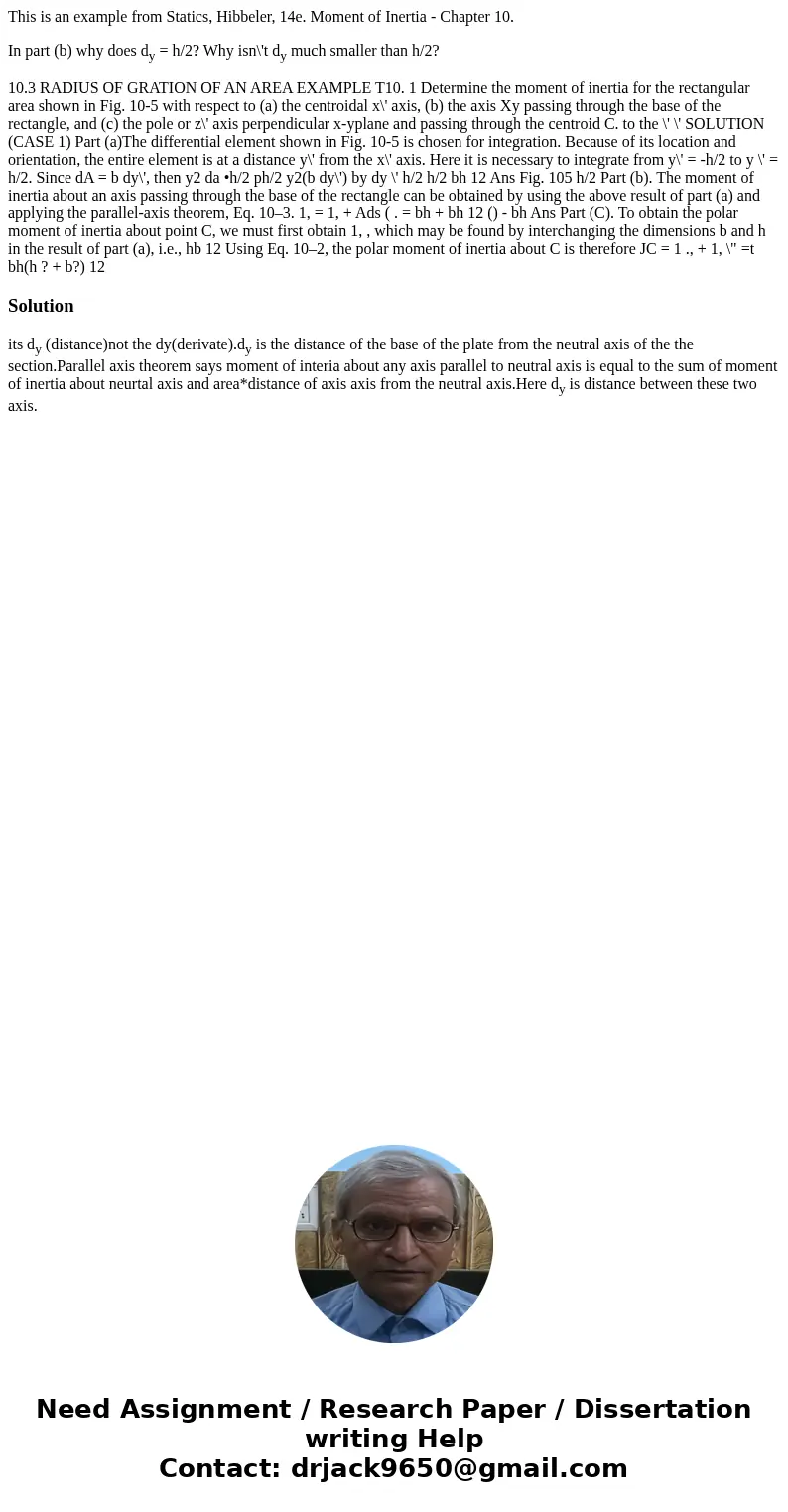This is an example from Statics Hibbeler 14e Moment of Inert
This is an example from Statics, Hibbeler, 14e. Moment of Inertia - Chapter 10.
In part (b) why does dy = h/2? Why isn\'t dy much smaller than h/2?
10.3 RADIUS OF GRATION OF AN AREA EXAMPLE T10. 1 Determine the moment of inertia for the rectangular area shown in Fig. 10-5 with respect to (a) the centroidal x\' axis, (b) the axis Xy passing through the base of the rectangle, and (c) the pole or z\' axis perpendicular x-yplane and passing through the centroid C. to the \' \' SOLUTION (CASE 1) Part (a)The differential element shown in Fig. 10-5 is chosen for integration. Because of its location and orientation, the entire element is at a distance y\' from the x\' axis. Here it is necessary to integrate from y\' = -h/2 to y \' = h/2. Since dA = b dy\', then y2 da •h/2 ph/2 y2(b dy\') by dy \' h/2 h/2 bh 12 Ans Fig. 105 h/2 Part (b). The moment of inertia about an axis passing through the base of the rectangle can be obtained by using the above result of part (a) and applying the parallel-axis theorem, Eq. 10–3. 1, = 1, + Ads ( . = bh + bh 12 () - bh Ans Part (C). To obtain the polar moment of inertia about point C, we must first obtain 1, , which may be found by interchanging the dimensions b and h in the result of part (a), i.e., hb 12 Using Eq. 10–2, the polar moment of inertia about C is therefore JC = 1 ., + 1, \" =t bh(h ? + b?) 12Solution
its dy (distance)not the dy(derivate).dy is the distance of the base of the plate from the neutral axis of the the section.Parallel axis theorem says moment of interia about any axis parallel to neutral axis is equal to the sum of moment of inertia about neurtal axis and area*distance of axis axis from the neutral axis.Here dy is distance between these two axis.

 Homework Sourse
Homework Sourse